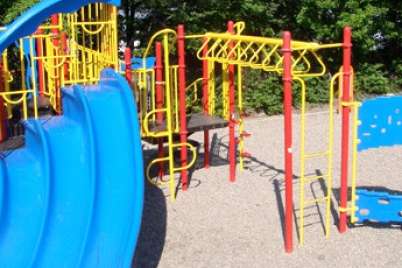
The case for ‘provocative’ playgrounds
Have boring playgrounds made it harder to get kids out to play? Child-development experts and parents say so in a new Wall Street Journal article.
The article claims that too much concern over safety has created play areas that don’t engage children. Psychologists and a study published in Pediatrics are cited in claiming a general overemphasis on safety can limit the development of a child’s physical skills:
We don’t give our children enough roaming space to help them test their limits or to help them become confident in their physical skills,” says Kathryn Hirsh-Pasek, a professor in the department of psychology at Philadelphia’s Temple University. “Sometimes when we protect people too much they never learn to take healthy risks.”
However, the article claims children and parents should expect more “provocative” playgrounds, like those more common in Europe, in the future. For instance, one new play area in Utah features a 30-foot high climbing pyramid.
Even though the playgrounds are intended to encourage more physical activity by appearing riskier, they still meet safety standards that only create a perception of risk. “It’s important that play environments are as safe as necessary, not as safe as possible,” says Dr. E Sandseter of Queen Maud University College of Early Childhood Education.
Earlier this year, an Active for Life article touched on many of these points in making the case against overly safe playgrounds, and in another, Sara Smeaton describes the reward of watching her kids take risks on the playground.






playgrounds are not good for very young children